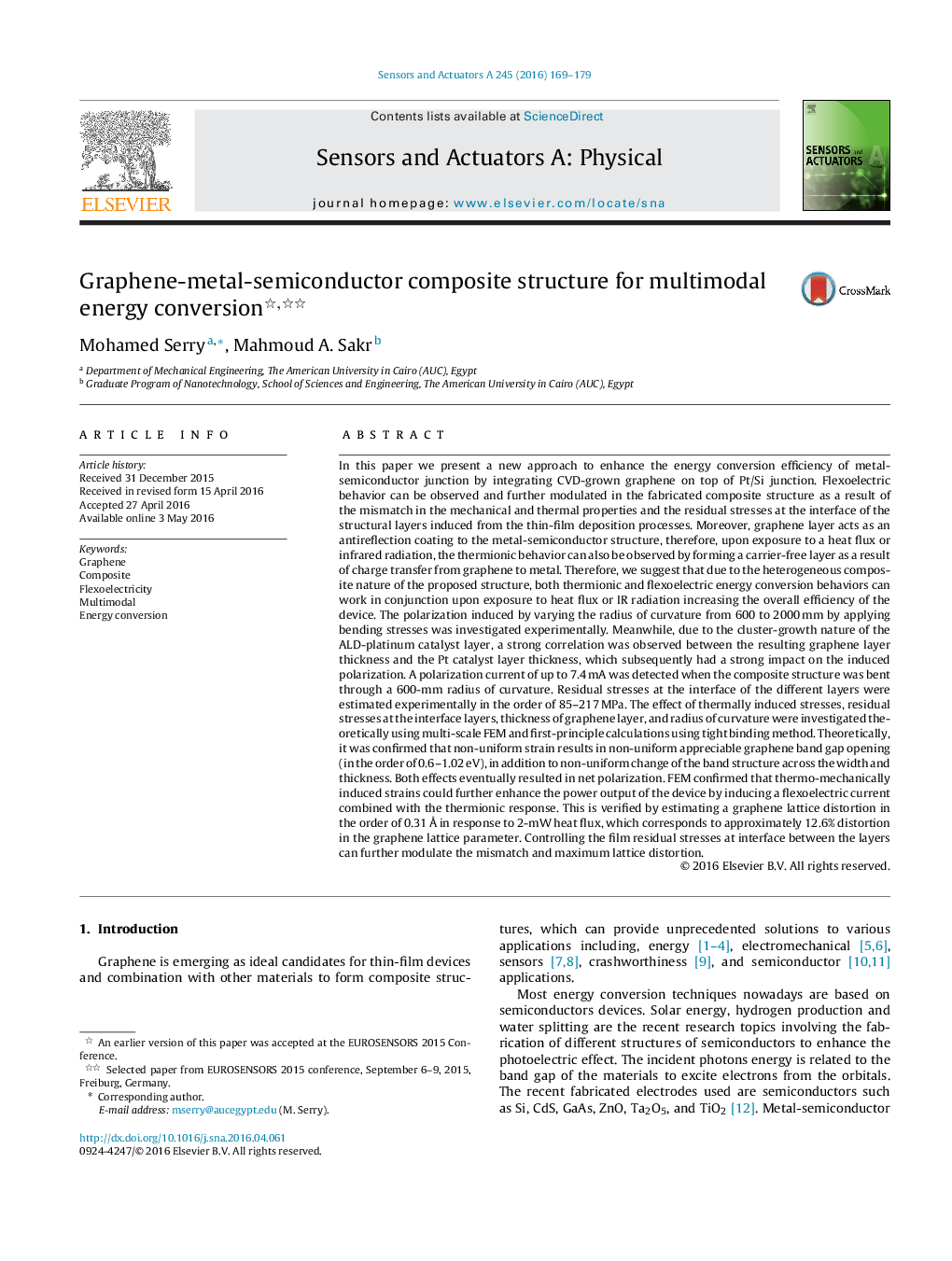| کد مقاله | کد نشریه | سال انتشار | مقاله انگلیسی | نسخه تمام متن |
|---|---|---|---|---|
| 748497 | 1461855 | 2016 | 11 صفحه PDF | دانلود رایگان |
In this paper we present a new approach to enhance the energy conversion efficiency of metal-semiconductor junction by integrating CVD-grown graphene on top of Pt/Si junction. Flexoelectric behavior can be observed and further modulated in the fabricated composite structure as a result of the mismatch in the mechanical and thermal properties and the residual stresses at the interface of the structural layers induced from the thin-film deposition processes. Moreover, graphene layer acts as an antireflection coating to the metal-semiconductor structure, therefore, upon exposure to a heat flux or infrared radiation, the thermionic behavior can also be observed by forming a carrier-free layer as a result of charge transfer from graphene to metal. Therefore, we suggest that due to the heterogeneous composite nature of the proposed structure, both thermionic and flexoelectric energy conversion behaviors can work in conjunction upon exposure to heat flux or IR radiation increasing the overall efficiency of the device. The polarization induced by varying the radius of curvature from 600 to 2000 mm by applying bending stresses was investigated experimentally. Meanwhile, due to the cluster-growth nature of the ALD-platinum catalyst layer, a strong correlation was observed between the resulting graphene layer thickness and the Pt catalyst layer thickness, which subsequently had a strong impact on the induced polarization. A polarization current of up to 7.4 mA was detected when the composite structure was bent through a 600-mm radius of curvature. Residual stresses at the interface of the different layers were estimated experimentally in the order of 85–217 MPa. The effect of thermally induced stresses, residual stresses at the interface layers, thickness of graphene layer, and radius of curvature were investigated theoretically using multi-scale FEM and first-principle calculations using tight binding method. Theoretically, it was confirmed that non-uniform strain results in non-uniform appreciable graphene band gap opening (in the order of 0.6–1.02 eV), in addition to non-uniform change of the band structure across the width and thickness. Both effects eventually resulted in net polarization. FEM confirmed that thermo-mechanically induced strains could further enhance the power output of the device by inducing a flexoelectric current combined with the thermionic response. This is verified by estimating a graphene lattice distortion in the order of 0.31 Å in response to 2-mW heat flux, which corresponds to approximately 12.6% distortion in the graphene lattice parameter. Controlling the film residual stresses at interface between the layers can further modulate the mismatch and maximum lattice distortion.
Journal: Sensors and Actuators A: Physical - Volume 245, 1 July 2016, Pages 169–179
